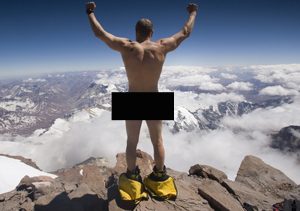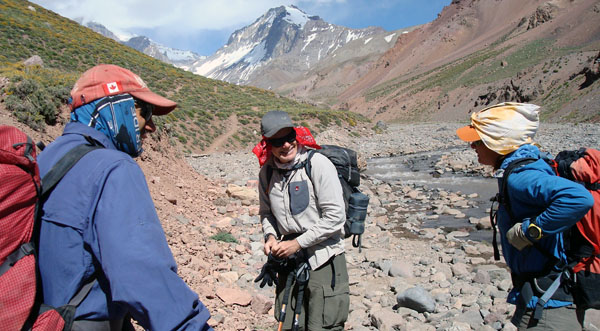In consideration of the services of Mountain Trip International LLC, their agents, owners, officers, volunteers, participants, employees, and all other persons or entities acting in any capacity on their behalf (hereinafter collectively referred to as "MTI"), I hereby agree to release, indemnify, and discharge MTI, on behalf of myself, my spouse, my children, my parents, my heirs, assigns, personal representative and estate as follows:
1. I acknowledge that mountaineering in foreign countries entails known and unanticipated risks that could result in physical or emotional injury, paralysis, death, or damage to myself, to property, or to third parties. I understand that such risks simply cannot be eliminated without jeopardizing the essential qualities of the activity.
The risks include, among other things: the hazards of walking on uneven terrain and slips and falls; being struck by rock fall, icefall or other objects dislodged or thrown from above; the use of climbing ropes and equipment; the forces of nature, including lightning, weather changes and avalanche; the risks of falling off the rock, mountain or into a crevasse; the risks of exposure to insect bites; encounters with animals and wildlife; the risk of altitude and cold including hypothermia, frostbite, acute mountain sickness, cerebral and pulmonary edema; travel in remote areas with poor or no access to emergency and/or medical services; consumption of food or drink; and improper lifting or carrying; my own physical condition, and the physical exertion associated with this activity. Foreign countries have their own laws and standards of acceptable conduct; food and water related illnesses; foreign political, legal, social, transportation, health, and economic conditions; different standards of design, safety, and maintenance of buildings, public places, and conveyances; local & medical facilities and providers; weather conditions; criminal activity, environmental hazards; standards of living and health standards that are not equivalent to life in the United States.
Furthermore, MTI employees have difficult jobs to perform. They seek safety, but they are not infallible. They might be unaware of a participant's fitness or abilities. They might misjudge the weather, other environmental conditions. They might misjudge whether the terrain is safe for travel or where or when an avalanche may occur. They may give incomplete warnings or instructions, and the equipment being used might malfunction.
2. I expressly agree and promise to accept and assume all of the risks existing in this activity. My participation in this activity is purely voluntary, and I elect to participate in spite of the risks.
3. I hereby voluntarily release, forever discharge, and agree to indemnify and hold harmless MTI from any and all claims, demands, or causes of action, which are in any way connected with my participation in this activity or my use of MTI’s equipment or facilities, including any such claims which allege negligent acts or omissions of MTI.
4. Should MTI or anyone acting on their behalf, be required to incur attorney's fees and costs to enforce this agreement, I agree to indemnify and hold them harmless for all such fees and costs.
5. I certify that I have adequate insurance to cover any injury or damage I may cause or suffer while participating, or else I agree to bear the costs of such injury or damage myself. I further certify that I am willing to assume the risk of any medical or physical condition I may have.
6. In the event that I file a lawsuit against MTI, I agree to do so solely in the state of Colorado, and I further agree that the substantive law of that state shall apply in that action without regard to the conflict of law rules of that state. I agree that if any portion of this agreement is found to be void or unenforceable, the remaining portions shall remain in full force and effect.
By signing this document, I acknowledge that if anyone is hurt or property is damaged during my participation in this activity, I may be found by a court of law to have waived my right to maintain a lawsuit against MTI on the basis of any claim from which I have released them herein.
I have had sufficient opportunity to read this entire document. I have read and understood it, and I agree to be bound by its terms.




